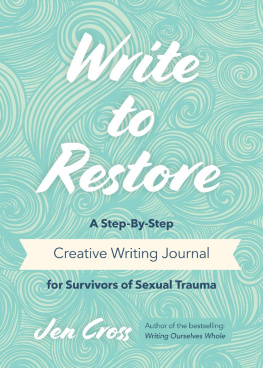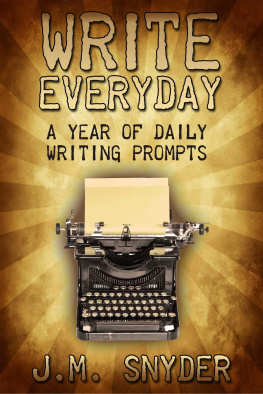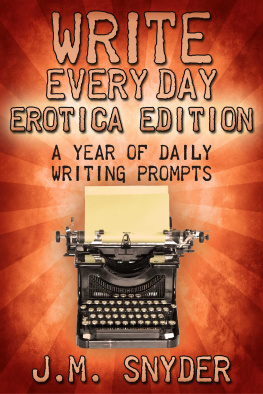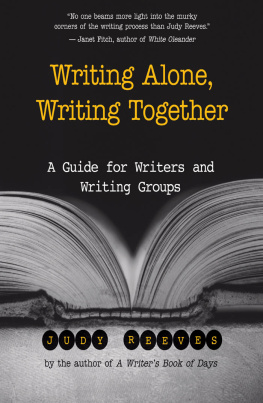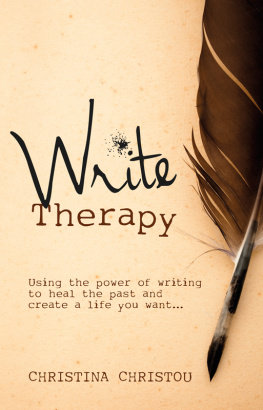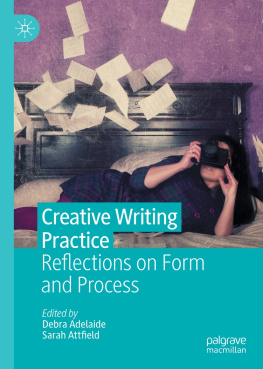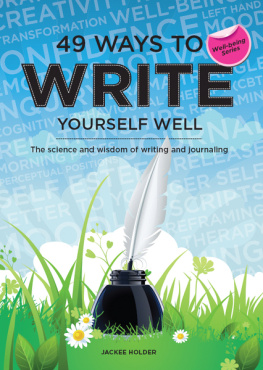WRITING AS SPIRITUALPRACTICE
AND THERAPY
Diana HC Tan
Copyright 2013 by Diana HC Tan
Cover image by author
Smashwords Edition
Smashwords Edition, LicenseNotes
This ebook is licensed for your personalenjoyment only. It may not be re-sold or given away to otherpeople. If you would like to share this ebook with another person,please consider purchasing and giving it to your friend. Otherwise,please kindly ask your friend to buy a copy from Smashwords orother ebook retailers.
Thank you for respecting the copyrighted workof this author.

Disclaimers:
The writing prompts in this ebook are notintended as a substitute for the medical advice of physiciansand/or professional therapists. The reader should consult aphysician and/or professional therapists in matters relating tohis/her health and particularly with respect to any symptoms thatmay require diagnosis or medical attention.
All brand or product names mentioned in thisebook belong to their respective owners.

Table ofContents
:

Chapter 1Writing as spiritual practice
One of the most satisfying aspects ofwriting is that it can open in us deep wells of hidden treasuresthat are beautiful for us as well as for others to see. -Henri Nouwen
Writing is soul work. Research by JamesPennebaker, Professor and Chair, Department of Psychology at TheUniversity of Texas, showed that physical health and workperformance can be improved by simple writing and/or talkingexercises.
Writing is gaining new ground in this age ofcreative therapies. Yoga, meditation, music, art and colortherapies, bibliotherapy (reading to heal), aromatherapy, soundhealing and healing with crystals and hot stones all offeralternative ways to healing the mind, body and spirit.
Writing is one easy and affordable exercise foreveryone. All it requires is pen and paper, or a computer andfingers to type.
Writing is also available to all strata of thepopulation. Writing as therapy and spiritual practice is differentfrom writing for a living. The writer who uses writing as a toolfor healing and for self-enlightenment is not writing for anaudience. Therefore, spelling, punctuation, good grammar andsentence structure are not pre-requisites. Pat Schneider, founderof Amherst Writers and Artists (AWA), believes that every person isa writer. With such a powerful statement and belief, she hasencouraged people from the low rungs of society to express and tohear themselves through writing. Her writing workshops have helpedmany people whose voices have traditionally been silenced bypoverty, discrimination, illness, age or other obstacles to achievea sense of personal worth and to become useful citizens ofsociety.
There are numerous books and articles onlinethat rave volumes about how writing has helped people to heal, thatwriting in ones own voice and as one knows how have brought aboutclarity and understanding of self.
A google search on writing methods throws upwebsites and documents from ordinary journaling and diary writingto more structured methods such as Ira Progoffs Intensive JournalWorkshop, Patricia Schneiders Amherst Writers and Artists,Proprioceptive Writing founded by Linda Trichter Metcalf, Ph.D.and the Birren Centres Guided Autobiography (GAB in short).Progoffs method is said to be a life-changing process that giveslife greater direction, vitality and purpose. Metcalf, in her bookWriting the Mind Alive, claims that writers using her methodbecome more energized and alive. The Birren Center, catering mostlyto senior citizens, is dedicated to enriching the lives of adultsthrough writing, sharing, and preserving their life stories andlife experiences.
In this internet age, blogging is big business.From the young to the old, from ordinary mortals to influentialpeople, from politicians and academicians to religious and theclergy, storing writing on the worldwide web is gaining new ground.Bloggers write for various reasons - as an outlet to vent theirpoints of view, or as a record of their lifes happenings, or toshare recipes and photos, or simply to keep an online diary. Whatis beneath the drive to blog is unspoken, but some bloggers wheninterviewed have said that they blog to vent feelings and thoughts.I just needed to, like, get it out there, one blogger confessed.Another said he blogged to let off steam. Seen this way, blogsare cathartic in nature and by venting feelings and thoughts -whether online, offline, or on paper - the act of penning thoughtsin black and white provides the writers with an avenue to clarifythoughts, feelings and actions. Of course, such activities call forthe writer to act responsibly towards others.
Journaling, scribbling, blogging or writingoffline are all about writing. So what is powerful about writingthen?
Writing, when done contemplatively, isspiritual practice. I should qualify that not all writing istherapeutic or healing. I guess a journalist on the job and workingunder pressure will not find writing spiritual or therapeutic atall!

Chapter 2 The difference between writing asspiritual practice and regular writing
What then is the difference between writing asspiritual practice and regular writing? For writing to be spiritualand healing, one key ingredient is that one writes from the deepestdepth of ones soul. As much as possible, nothing should becensored. The writer should feel free to speak her mind. Ifconfidentiality is a problem, the writer can ensure that theirjournal is kept under lock and key. If deemed necessary, thewriting could be destroyed at the end of, say, a season or after abreakthrough. The writer who uses writing as a tool to heal must bewilling to do some intense self-reflection and introspection. Ifthe hurt is too deep, professional help such as counselling must besought and the healing process made more complete by the two-prongapproaches of counselling and writing.
To honor the practice of writing as spiritualpractice, one can set aside some time each day to write. Forexample, you could lay aside half an hour to an hour each day thatis dedicated solely to this work. For that period of time, writenot to be published but for your own sanity. If a collection ofwriting builds up over time and the story is worth telling andpublishable, that is another adventure.
If you practise daily prayer or meditation, youcould incorporate writing with your practice. On a typical day,start with half an hour of meditation, either with Scripture orjust sitting in stillness and becoming aware of your breath goingin and out. Slow down and relax but be alert to the thoughts thatfloat in and out, the feelings that arise from within. Depending onthe faith tradition that you subscribe to, go with the meditationmethod that best suits you. After meditating and to signal that theperiod of stillness is over, move to another area where you jotdown your thoughts and feelings. What came up for you during thehour of prayer? Let your pen flow and be present to your writingand being. Do not censor what comes up for you. Write in prose,dialogue or even write a poem. Scribble. Draw. Do something and donot stop writing. If you have nothing in mind, just write nothing,nothing, nothing. Never mind if the sentence or paragraph does notmake sense.
At the end of the writing period, take a fewminutes to go through the written piece. Highlight the emotion/sand word/s that you feel are loaded with meanings. Then deepen yourwriting on another day by looking at these emotions and wordsagain. If these sound too complicated, and if you are able, enlistthe help of someone who has knowledge of such form of therapy tohelp you. Or read from the wealth of books that are available onthis subject. Google writing as therapy or visit Amazon onlinefor books on the subject.
Next page


